Going global with genomics
A taxidermied elephant greeted visitors with a raised trunk at the main entrance of the Smithsonian National Museum of Natural History in Washington, D.C. It was a Monday morning on a regular workweek, but there was a busy hum of visitors clicking photos and getting their bearings. On the third floor, where the sounds of traipsing visitors dissipated, Jonathan Coddington, the museum’s associate director of science, laid out his grand vision for the museum’s Global Genome Initiative, which aims to accelerate genomic study of up to 50 percent of eukaryotic life forms on Earth.
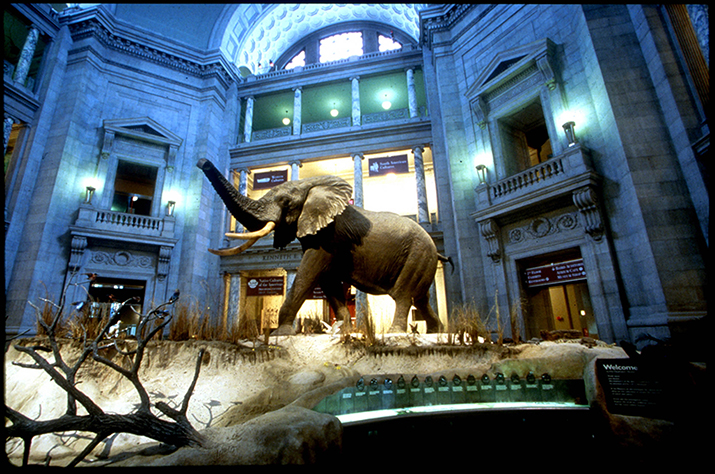 RotundaSmithsonian Institution
RotundaSmithsonian Institution
“As a museum, we’re doing collection-based research,” he told me as we got comfortable at a pine-colored table in his office. Coddington, who looked like a college professor in his black blazer, khakis and glasses, said that in the 21st century, that means the research has to embrace genomics in addition to the classical physical morphology work that has dominated natural history studies for centuries.
The Global Genome Initiative did not adopt the word “global” hastily. There are somewhere between 160,000 and 200,000 genera on Earth (all living things are ranked into categories, from family to genus to species). “We want to collect genome-quality tissues of half the genera of life on Earth,” said Coddington, adding that the collection will be made available to researchers.
The biorepository will hold 5 million tissue samples. By the end of 2015, museum researchers hope to have genome-quality tissues from 500 families.
For the grand plans to become achievements, the scientists involved first have to figure out some details that sound rather mundane but are essential for the success of the endeavor. For example: Which tubes are the best for collecting the tissue samples that will provide the DNA for sequencing?
Tubes and other troubles
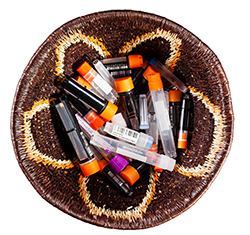 BasketJames Di Loreto, Smithsonian
BasketJames Di Loreto, Smithsonian
Coddington flicked through an assortment of screw-cap, 2-milliliter tubes in a woven basket on the table. He pulled out an inch-long white tube. This tube, he said, is the current candidate for tissue collection. But the problem with the tube – the problem, in fact, with all of the tubes in the basket – is that “none of them is warranted by the manufacturers for liquid phase nitrogen,” he said.
Freezing samples in liquid nitrogen is the gold standard for tissue preservation in the field. But the caps pop off 2 percent of the tubes selected by the Smithsonian researchers when they are dropped into liquid nitrogen Dewar flasks in the field. When setting up a biorepository of 5 million tissue samples, we’re talking about 100,000 lost caps.
And that’s only one of the problems. Another is actually getting a hold of liquid nitrogen. On a recent trip to Costa Rica, Coddington said, he found only one town that sold the stuff. Another museum scientist, Carla Dove, had worse luck in the Republic of Djibouti this summer. There was no liquid nitrogen to be found in the entire country. “When you start thinking about industrial-scale biodiversity genomics, all the problems that attend to you in the field ramp up,” noted Coddington.
So the 80 or so scientists at the museum who are doing the genomic analyses have to think about how to preserve tissue during field collections without liquid nitrogen. The method has to be cheap and easy. They have to make sure whatever preservative is used doesn’t degrade the DNA to the point that it can’t be used for genomic analysis.
During her trip to Djibouti, Dove, a petite woman with a bright smile, saved her samples in ethanol, dimethyl sulfoxide and sodium dodecyl sulfate.
But what constitutes genomic-quality DNA from samples subjected to the trials and tribulations of travel? Coddington said that with the sequencing instruments they have now, such as the ones made by Pacific Biosciences and Life Technologies, their working definition of “genome-quality DNA” is having 50 percent of the DNA at lengths of 9 kilobases or larger.
Then there is the headache of keeping track of boxes of 2-milliliter tubes with various tissue samples during collection and analysis.
As head of the Feather Identification Lab at the museum, Dove made the trip to Djibouti at the behest of the U.S. Navy. She was to inventory the biological diversity on Camp Lemonnier, which is being expanded. Dove’s interest lies in obtaining bird DNA sequences to help identify those involved in midair collisions with aircraft.
While there, Dove and her team collected samples from 430 vertebrates, including a series of birds. Dove did specimen preparation on dead birds, as is her normal routine, but she also collected tissues from the birds for the genome initiative and popped them into the tubes with the different preservatives. She discovered that just making all the sticky labels for the tubes and making sure they were cross-referenced back to the correct birds was labor intensive. “We spent almost as much time preparing labels as we did preparing birds,” she said.
But it looks like the scientists are getting closer to coming up with tissue-collection protocols that will work on the global scale. Up on the first floor of the museum, molecular biologists in the glistening white Laboratory of Analytic Biology, which many visitors don’t even realize exists within the museum, were busy analyzing the quality of the DNA in the tissue samples Dove brought back from Djibouti.
From the white bands on an agarose gel under ultraviolet light, it was obvious that all the samples in the different preservatives gave good-quality DNA. The news thrilled Dove, who was desperate to know how the tissues fared. “We don’t have to carry those heavy nitrogen tanks all the time!” she exclaimed. But her excitement was squelched by LAB biologists, who prefer to work with the gold standard of frozen tissues.
Ramping up
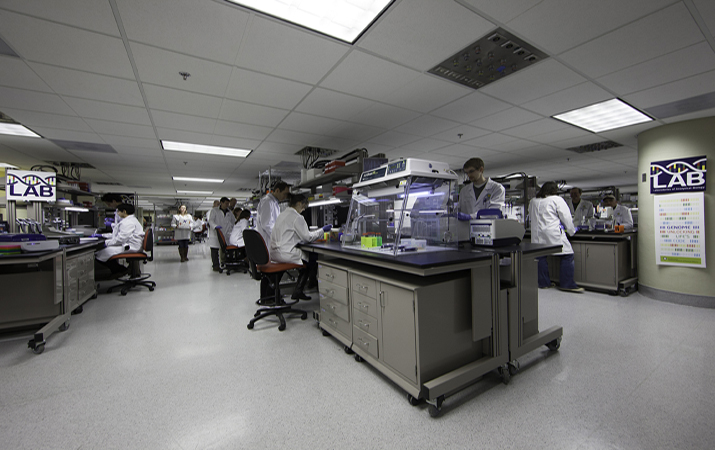 Laboratories of Analytical BiologyImage courtesy of Donald E. Hurlbert, JamesDi Loreto and Brittany M. Hance, Smithsonian
Laboratories of Analytical BiologyImage courtesy of Donald E. Hurlbert, JamesDi Loreto and Brittany M. Hance, Smithsonian
While looking at one of the gels, Coddington emphasized how important it was for the Smithsonian scientists to work out the kinks in sample collection and analysis. As the scale of the Global Genome Initiative expands, the museum scientists don’t intend to get bogged down with analyzing tissues from 100,000 different genera. They intend to farm out much of the sequencing. “We’re not going to turn into the Broad Institute and spend all our time sequencing,” said Coddington. 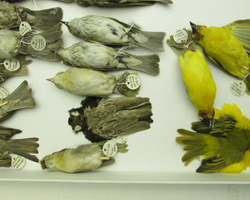 Because the tissue collection and sequencing will happen all over the world, Coddington and his team want to be certain that they arm their collaborators with sample collection and analysis protocols that are rock-solidly reliable and easy to do.
Because the tissue collection and sequencing will happen all over the world, Coddington and his team want to be certain that they arm their collaborators with sample collection and analysis protocols that are rock-solidly reliable and easy to do.
Coddington, a spider expert himself, has great hopes for the biodiversity collection. Only about 1,000 eukaryotic genomes have been sequenced to date, and Coddington pointed out that scientists haven’t paid close attention to phenotypes. Take the cow genome, he said. The DNA came from “a bull named Dominico. Nobody seems to know what happened to Dominico. In most cases, there is no actual physical voucher for the phenotype,” he said.
Coddington explained that because Dominico’s sperm was used for sequencing, genomics researchers did not record what Dominico even looked like. Was he a brown bull or a black bull? But that’s where he says natural history museums like the Smithsonian come to the rescue – because they excel at cataloging the morphologies. As Coddington noted, “We’re all about phenotypes.”
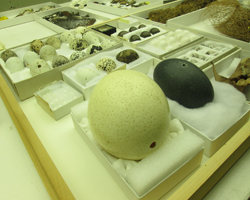 Displays of samples at the Feather Identification Lab.Images courtesy of Rajendrani Mukhopadhyay
Displays of samples at the Feather Identification Lab.Images courtesy of Rajendrani Mukhopadhyay
The project isn’t simply about creating a catalog of genomes. The collection will become an essential tool to understand biodiversity. “It will enable higher-quality, finer-grain, more reliable environmental monitoring in important ecosystems,” said Coddington. “It will be important for climate change.” He also talked about the great likelihood of commercially important natural products emerging from the project as scientists discover new species in their quest to sequence them.
The initiative also will be a basic researcher’s goldmine for understanding life itself. Coddington rattled off oddball facts: Sharks don’t get cancer; there is a jellyfish that is immortal; and there is a marine worm that can regenerate an entire organ from a tiny cube of tissue. “For humans and similar organisms, there are absolutely ironclad rules of biology,” Coddington mused. “But something, somewhere on Earth, is breaking those rules, and you wonder why.”
For now, he and his team need to figure out how best to get tissues from about 100,000 genera, evaluate the DNA in each, and make the data available for scientists of today and tomorrow. “We’re in the forever business,” said Coddington. “Some of our collections are 200 years old. When we say we’re going to keep something, we mean it.”
Enjoy reading ASBMB Today?
Become a member to receive the print edition monthly and the digital edition weekly.
Learn moreGet the latest from ASBMB Today
Enter your email address, and we’ll send you a weekly email with recent articles, interviews and more.
Latest in Science
Science highlights or most popular articles

National Academies propose initiative to sequence all RNA molecules
Unlocking the epitranscriptome could transform health, medicine, agriculture, energy and national security.

From the journals: JLR
What can you do with artificial lipoproteins? A new key to angiogenesis. Flavonoids counteract oxidative stress. Read about recent papers on these topics.

Iron could be key to treating a global parasitic disease
A study has found that leishmaniasis causes body-wide changes in iron balance, leading to red blood cell damage.

Environmental DNA is everywhere
The ability to extract trace bits of DNA from soil, water, and even air is revolutionizing science. Are there pitfalls?

Early COVID-19 research is riddled with poor methods and low-quality results
The pandemic worsened, but didn’t create, this problem for science.

From the journals: MCP
Three views of mass spec: analyzing secreted protein spectra, imaging mass spectrometry for clinical use and spectral libraries for MS data analysis. Read about these recent papers.

